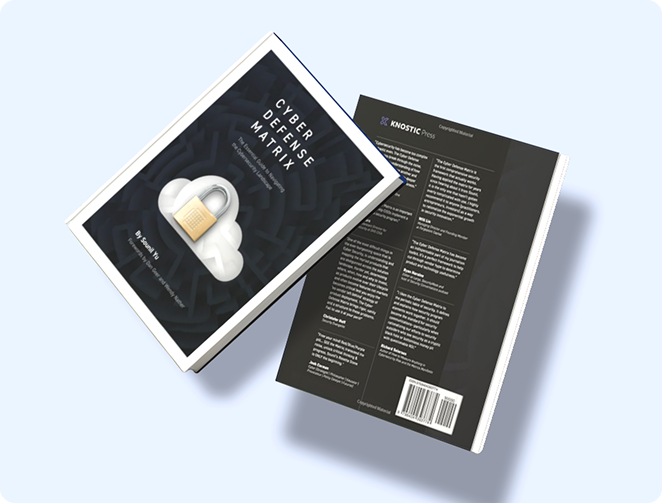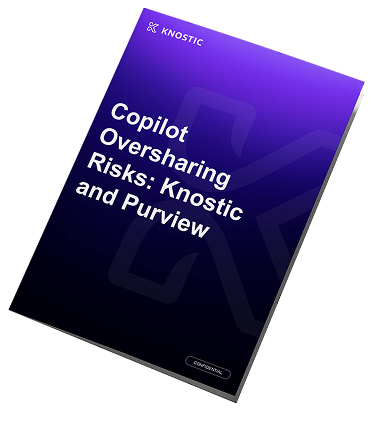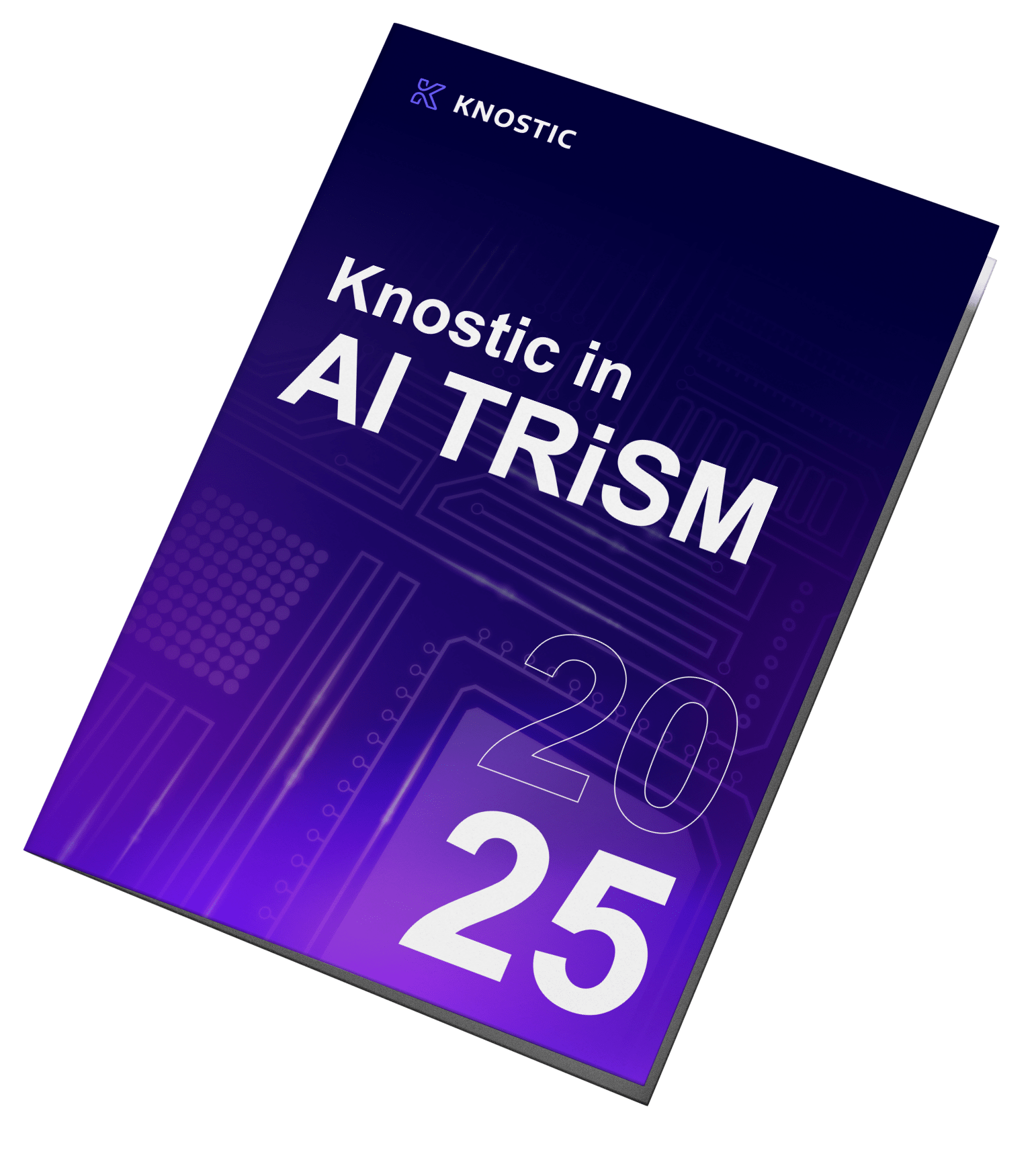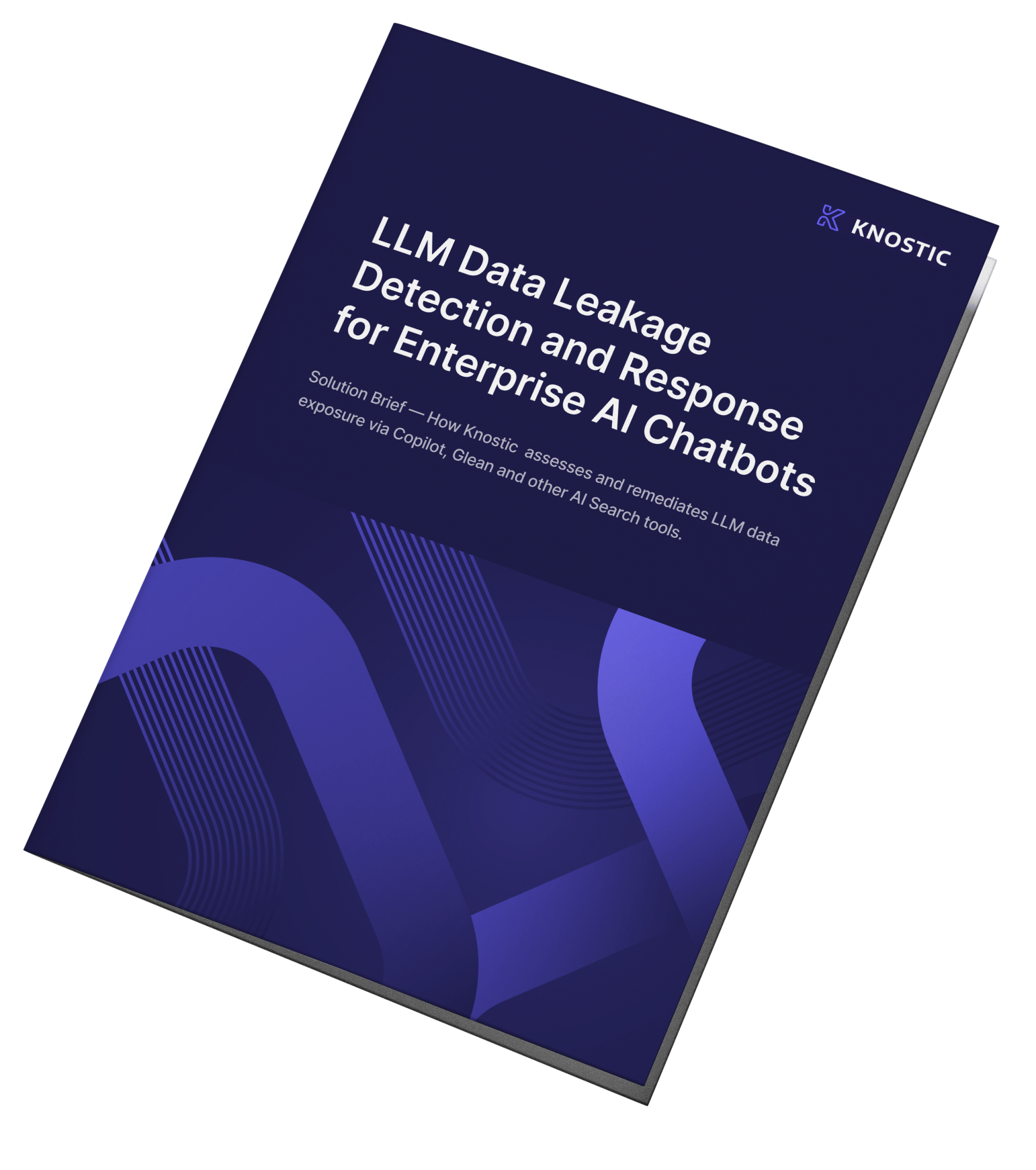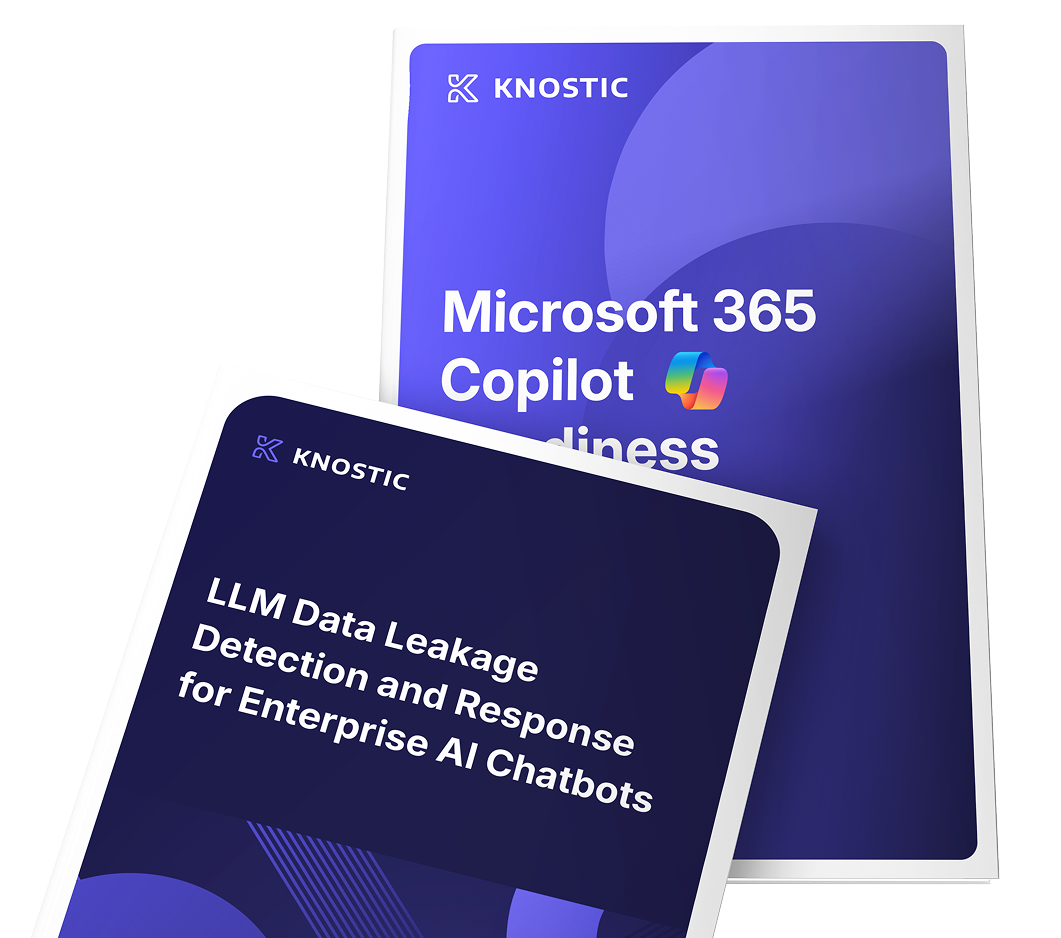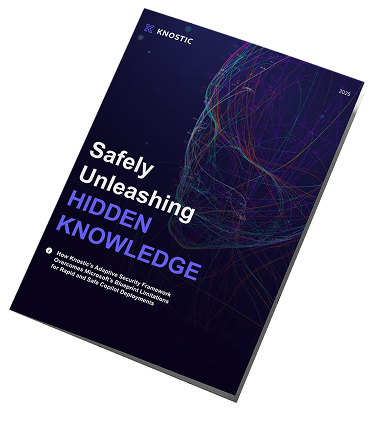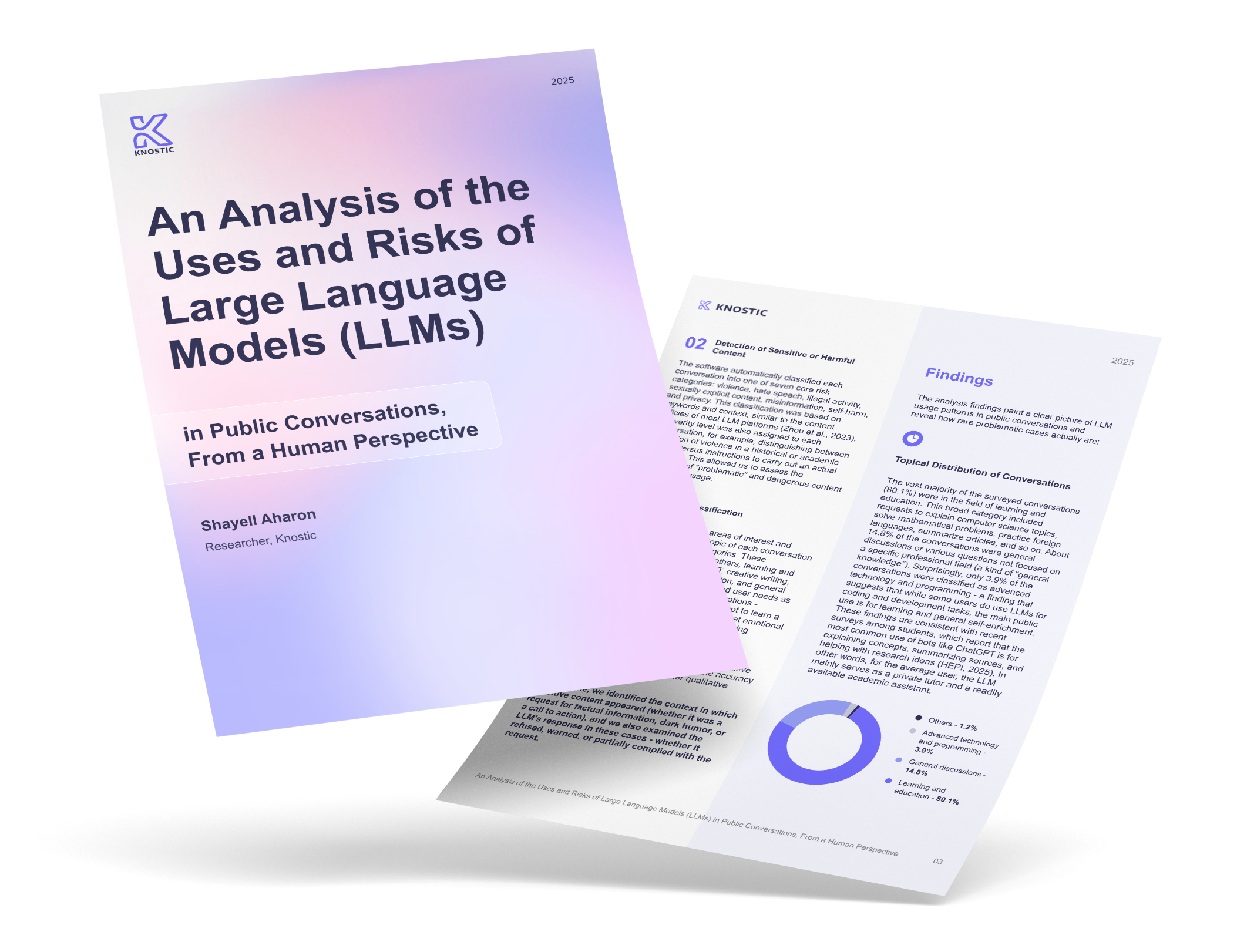What This Blog Post on Attribute-based Access Control Implementation Covers
-
Attribute-based access control (ABAC) defines access rules based on attributes of the user, resource, action, and environment, offering dynamic, context-aware governance for AI systems.
-
ABAC enhances AI security by enforcing access policies at the answer stage, blocking context-inappropriate answer generation, and ensuring compliance with frameworks such as the EU AI Act.
-
Effective ABAC implementation requires a structured approach, including use case scoping, attribute mapping, writing plain-language policies, and deploying PDPs and PEPs across the AI pipeline.
-
Migration from role-based access control (RBAC) to ABAC involves mapping roles to attributes, initially running a hybrid model, and systematically replacing static grants with contextual enforcement.
-
Knostic improves ABAC deployment by auditing past AI exposures, applying real-time enforcement, refining sensitivity labels, and generating audit-ready logs that support measurable governance.
ABAC Implementation Overview for AI Assistants and Agents
Attribute-based access control implementation strategies are very popular nowadays for integration with AI solutions. Focusing on AI assistants, they generate answers by combining prompts, retrieved content, and tool outputs. Oversharing often happens at the last step, inside the answer. ABAC checks the purpose and context before the model returns text or files. It blocks or redacts when policy or labels say “no.” It also leaves a clear audit trail for regulators under the EU AI Act timelines. Strong answer-time control reduces breach costs, as shown in IBM’s 2025 Cost of a Data Breach Report, which found that organizations using real-time access controls saved an average of US$1.8 million per breach compared to those without such measures.
Generally, ABAC makes decisions based on attributes related to the subject, resource, action, and environment. This four-part model aligns neatly with modern AI risk guidance from public bodies such as the National Institute of Standards Technology (NIST) and the Cybersecurity and Infrastructure Security Agency (CISA.) In this model, subject attributes include persona, clearance, and training status. Resource attributes include sensitivity, owner, and residency. Action attributes are defined by read, write, export, and execute activities. Finally, environment attributes capture device posture, time, location, and session risk. Here, session risk refers to the dynamic security posture of a login session, combining factors such as unusual behavior, geo-anomalies, or device compromise to assess whether access should be tightened or denied. Examples and real-world use cases of ABAC implementation can be found in this Knostic article.
ABAC Implementation Prerequisites
To be efficient, ABAC implementation has various prerequisites, including accurate attributes and a shared vocabulary, as well as audit-ready logging.
AI Data Classification and Labels
Label data for sensitivity, residency, retention, and ownership. Use clear values that map to decisions, such as 'allow', 'redact', or 'deny'. Ensure labels follow content into embeddings and vector stores. This propagation is achieved through metadata chaining, where classification tags applied at the source are preserved and attached to derived data objects such as embeddings, so that sensitivity labels remain intact throughout the AI pipeline. Record provenance so that retrieved chunks, the discrete pieces of text or data retrieved from a knowledge base in a retrieval-augmented generation (RAG) system, carry the correct tags. Align labels with enterprise tooling and legal duties in the EU AI Act. Finally, keep label guidance simple so teams apply it consistently.
Identity and Context Attributes
Pull subject attributes from your identity provider and HR systems. Include persona, department, clearance, and employment status. Add environmental signals, such as device posture, geo-location, time, and session risk. Refresh attributes often and resolve conflicts from multiple sources. Treat these inputs as critical controls within a Zero Trust program. This keeps decisions accurate per request.
LLM/RAG Enforcement Points
Place enforcement before, during, and after model calls. Check prompts at a gateway that sets roles and do-not-answer classes. Guard retrieval with a network access control list (ACL) and label-aware filters. Constrain tools and agents with purpose-bound scopes. Apply output checks for grounding and redaction just before delivery. These layers match current international secure AI deployment guidance.
ABAC Implementation Steps (Clear, Actionable)
The following 10-step ABAC rollout should be applied to risk-tier use cases, defining attributes/owners, codifying plain-language policies, deploying policy decision point/policy enforcement points (PDP/PEP), enforcing across the LLM path, logging evidence, conducting a red-team exercise, measuring effectiveness, and scaling.
1. Scope and Risk-Tier Use Cases
Select one or two AI assistants or agents for the first wave. Choose cases with real value and moderate risk. Classify each case by impact and data sensitivity. Define specific objectives, such as reduced leakage and stable latency. Set a short pilot timeline and clear exit criteria. Keep the scope small to ensure precise and fast results.
2. Map Attributes and Owners
List subject attributes such as persona and clearance. List resource attributes such as label and owner. Define action types like read, write, export, and execute. For example, in a marketing assistant, an “export” action might be denied when the user attempts to download a customer contact list marked as confidential, while still allowing read access for campaign analysis. Capture environment attributes, such as device and geographic location. Assign owners to every attribute to maintain high quality. Publish contact points for policy and data questions.
3. Write Plain-Language ABAC Policies
Describe rules in clear business terms first. Translate them into engine rules after stakeholders agree. Include allow, redact, and deny paths in every policy. State required attributes and the decision effect. Keep exceptions rare and time-bound. Maintain version history for every policy so changes are traceable.
4. Choose PDP/PEP Technology
Adopt a central PDP, the engine that evaluates access rules, which you can audit and review. Use proven engines such as (eXtensible Access Control Markup Language) XACML-style or (Open Policy Agent) OPA-compatible PDPs. Deploy PEPs, the enforcement components that apply the PDP’s decisions in real time, at the prompt, retrieval, tool, and output steps. Prefer lightweight PEPs that your teams can maintain. Ensure the PDP exposes decisions, reasons, and IDs. Align architecture with CISA’s Zero Trust Maturity Model guidance on policy and enforcement.
5. Wire Attribute Feeds
Automate feeds from identity providers (IdP), Human Resources Information Systems (HRIS), mobile device management (MDM), and labeling platforms. Define data freshness levels and update windows. Resolve conflicts with priority rules and clear owners. Validate values with nightly checks and sample audits. Record source, timestamp, and transformation steps for every attribute. Treat the attribute pipeline as production necessary.
6. Enforce Across the LLM Path
Gate prompts with system roles, JSON-only replies, and tool allow lists. Filter retrieval using repository ACLs and resource labels. Keep chunks clean and traceable to sources. Limit tools and agents with purpose scopes and short-lived permission elevation. Run output grounding checks and redact PII and secrets before delivery. Prove every decision with captured context.
7. Log Decisions for Audits
Store the attribute snapshot for each request. Record the policy ID, evaluation result, and redactions. Include source provenance for retrieved content. Capture latency to tune the system effectively. Keep logs scoped by role and purge on schedule. Map this evidence to EU AI Act governance and transparency duties.
8. Test with Red Teams
Challenge the system with direct and indirect prompt injection. Probe retrieval for cross-tenant and cross-label leaks. Try role crossover and export attempts through tools. Mix attacks to stress layered defenses. Repeat tests after every policy or model change. Utilize public threat guidance to inform scenario development. Organizations can strengthen this process by utilizing open-source adversarial testing frameworks, such as Microsoft’s Counterfit or IBM’s Adversarial Robustness Toolbox, which provide repeatable methods for simulating prompt injection and leakage attempts.
9. Pilot, Measure, Tune
Run a time-boxed pilot in production-like conditions. Track leakage rate, deny and allow accuracy, and PDP latency. Investigate noisy rules and stale attributes. Fix issues quickly and retest. Share results in a simple scorecard. Use breach cost data to show risk reduction.
10. Scale and Govern
Add more apps and enforcement points after a stable pilot has been established. Template policies and reuse common conditions. Retire redundant roles as ABAC matures. Schedule regular regressions and red-team rounds. Update attribute contracts when systems change. Align with CISA and NIST updates to ensure controls remain current.
RBAC to ABAC Migration Strategy
RBAC to ABAC migration elevates access from static roles to context-aware decisions, enforcing least privilege at answer time, mitigating GenAI oversharing, and satisfying zero-trust and audit demands.
Map Roles to Attributes
Use your roles as starting points. Convert roles into subject attributes and entitlements into rules. Keep RBAC as a safety net while ABAC narrows decisions by context and purpose. Version policies and run a regression suite on every change. Maintain break-glass access with monitoring. Communicate wins using audit evidence and reduced leakage.
Next, inventory roles and map them to personas and clearances. Translate group memberships into subject attributes. Map repositories and apps into resource attributes. Convert coarse entitlements into precise policy rules. Document gaps where roles do not reflect real work. Update owners for each mapped attribute.
Run Hybrid First (RBAC + ABAC/PBAC)
Keep existing RBAC grants for baseline access. Add ABAC to refine decisions at the time of answering. Use personas to express purpose and need-to-know. Measure reductions in unnecessary access. Phase out legacy grants after confidence grows. Keep fallbacks ready during these early stages.
Change Safety
Version every policy and attribute schema. Run automated tests for allow and deny paths. Track PDP latency to catch performance regressions. Keep break-glass accounts with tight oversight. Roll back cleanly if production issues appear. Train operators to review logs and explain decisions.
Common ABAC Implementation Pitfalls
Common pitfalls that could happen during the implementation process often determine whether AI governance delivers reliability or devolves into incidents, delays, and audit findings.
Rule Explosion
Rule sets proliferate without discipline. As a best practice, track policy growth with thresholds (e.g., alert when a single policy set exceeds 500 active rules) and use visual flow charts to consolidate overlapping conditions.
Attributes decay when sources are unclear. Paper-only policies fail without enforcement points. Logs can leak personally identifiable information (PII) if not scoped and masked. Teams struggle if owners and freshness are undefined. Use public guidance to avoid these traps. Design policy templates for common patterns. Reuse conditions for device, geo, and session risk. Group personas to limit rule duplication. Review rules monthly and remove overlaps. Keep naming standards tight and consistent. Track rule count and evaluation time as health signals.
Stale or Conflicting Attributes
Pick one source of truth for each attribute. Define freshness windows for every feed. Resolve conflicts with priority and fallback logic. Alert owners when values fall out of range. Reconcile nightly and sample values weekly. Document the whole lineage from source to PDP.
Paper Policies Without PEPs
Policies only work when enforced. Place PEPs before the model call and before the answer. Filter retrieval using ACLs and labels. Constrain tools with purpose-bound scopes. Check and redact output just before delivery. Prove it all with decision logs. For clarity, teams should reference architectural diagrams such as Knostic’s AI governance enforcement flow, which illustrates where PEPs sit across prompt, retrieval, tool, and output layers.
Unprivate Telemetry
Mask PII in logs by default. Limit access to telemetry by role and duty. Set short retention periods that meet audit needs. Encrypt storage and track queries. Review access patterns for misuse. Align with current public guidance on secure AI operations.
How Knostic Accelerates ABAC Implementation for AI
Knostic provides inference-aware control at the knowledge layer for LLM search assistants. It enforces context-aware, persona-based access at answer time so need-to-know applies to prompts, tools, and outputs. It continuously monitors for oversharing and inferential risk and extends, not replaces, existing RBAC/IAM, DLP, and Purview.
How can Knostic help with accelerating ABAC implementation for AI?
-
Simulate prompts with real access profiles before rollout.
-
Audit-ready inference lineage (prompt → retrieval → decision → output) with tamper-evident logs exportable to SIEM, e.g., Splunk or Sentinel.
-
Knowledge-graph mapping of users, sources, and labels to detect indirect inference paths.
-
Policy/label optimization from observed outputs to tighten sensitivity labels and Purview rules.
-
No-code integrations with Copilot and Glean for pipeline-embedded policy checks.
What’s Next?
Download the Knostic AI data governance white paper and align pilots to its checklists. Map your first assistant and pick attributes and labels. Stand up a PDP and two PEPs and run a two-week pilot. Capture evidence and tune rules with measurable goals. Expand to retrieval and agent tools next. Keep testing and report progress with simple, trusted metrics.
FAQ
• What is ABAC?
ABAC uses attributes of users, resources, actions, and context (device, location, sensitivity) to decide access. It enforces need-to-know dynamically, unlike static role-based models.
• What are the most important steps in the ABAC implementation process?
Important steps include defining scope and risk-tier use cases, mapping attributes and their owners, writing clear policies, selecting PDP/PEP technology, wiring attribute feeds, enforcing across the LLM path, logging decisions, testing with red teams, piloting, and scaling with governance.
• How does Knostic support ABAC implementation?
Knostic enforces ABAC at answer time, audits past oversharing, optimizes labels and policies, continuously monitors AI interactions, and provides audit trails for regulators. This ensures AI assistants respect permissions and reduces leakage risks.








